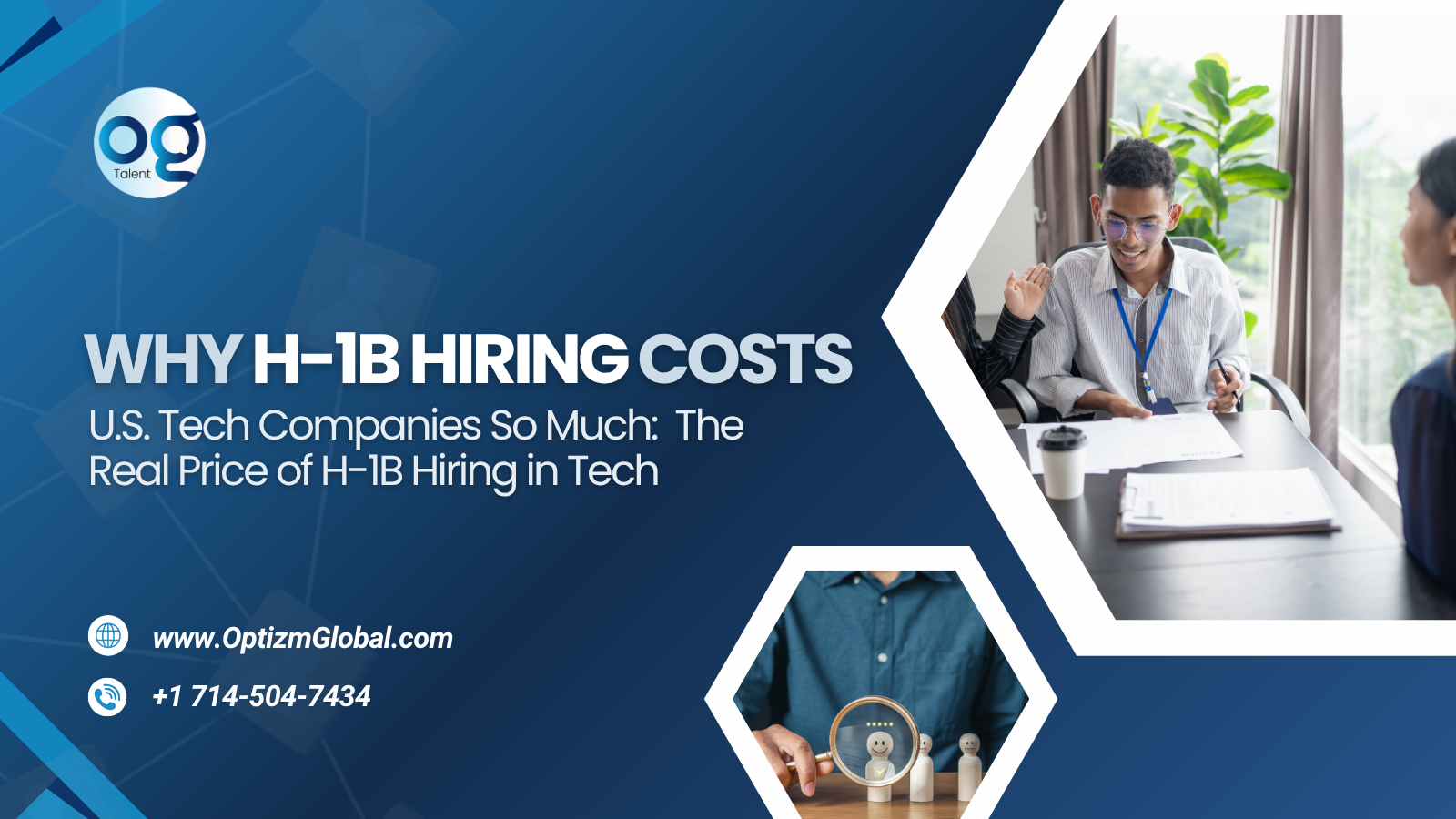For years, the H-1B visa has served as a pathway for tech firms in the US to tap into specialized talent, especially software engineers, data scientists, and artificial intelligence (AI) specialists. While the visa is a means for bridging the skills gap, hiring a foreign worker through H-1B has become increasingly costly and burdensome for companies, including small and mid-sized companies.
Let’s break down what is making the hiring costs so high, where the cost goes in the hiring process, and why many are looking at alternative hiring methods.
What Makes H-1B Hiring So Expensive for U.S. Tech Companies?
Sponsoring an H-1B worker is not as easy as extending a job offer and submitting paperwork. Each step of the process comes with a fee, legal costs, and administrative effort.
Here’s a common example of cost distribution:
Filing fees – U.S. Citizenship and Immigration Services (USCIS) imposes several fees that need to be covered:
- $460 for the base filing fee
- $500 for the anti-fraud fee
- $750 – $1,500 for the ACWIA training fee, depending on the size of the employer
- $4,000 for the Public Law 114-113 fee (for employers with 50+ employees and at least 50% on H-1B or L-1 visas).
Legal and processing fees: Organizations often retain the services of immigration lawyers to handle compliance and documentation. The cost of legal fees varies from $1,500 to $4,000 per application.
Premium processing fees: Many companies pay the optional $2,805 premium processing fee to accelerate decisions from months to weeks.
When all of these things are specifically considered, the average overall cost for an H-1B hire can top $10,000, not even looking at relocation or onboarding costs.
The Lottery System Puts Financial Risk in Play
As the H-1B program is capped at 85,000 new visas per year (20,000 of those newer U.S.master’s degrees. In 2025, USCIS received over 470,000 registrations, a 40% jump from the prior year.
This means less than 20% of applications are picked in the lottery.
Even if the company’s candidate is not picked, companies still have to bear registration, attorney, and compliance costs. For startups and smaller firms, this unpredictability makes H-1B hiring a financial gamble with low success odds.
Ongoing Compliance and Reporting Expenses
Even after getting the visa, the costs do not stop there. Employers will have to follow the strict regulations by the DOL and USCIS regarding hiring foreign nationals, which include:
- Labor Condition Application (LCA) filings
- Public Access File maintenance for wage and worksite details
- Notifications and amendments in case of employee relocation or job change
Any compliance mistake, whether intentional or not, may lead to penalties or audits. To be on the safe side, many firms retain immigration counsel or compliance platforms year-round, adding thousands to their annual budgets.
Wage Requirements and Market Pressures
U.S. law requires H-1B employers to pay the prevailing wage-a rate set by the DOL based on role, experience, and location. This ensures that foreign workers are not underpaid but also limits cost flexibility.
For example, even when the market rate for an identical local job is somewhat less, the prevailing wage for a junior data engineer in San Francisco may be near $130,000 annually.
When you consider the filing fees and attorneys’ costs that go along with H-1B employment, the full cost of hiring and retaining that employee with H-1B status can easily exceed $150,000 or more per year.
Project Delays and Revenue Losses
Visa backlogs and processing delays are invariably time-consuming, delaying projects. Even with premium processing, the effective timeframe to receive a final approval for hiring an employee under H-1B status is generally between three and six months. In the interim, a company will likely encounter:
- Extended project timelines.
- Extra contractor costs, borne temporarily to cover the vacancy.
- Loss of productivity due to the absence of key technical positions.
If a firm is a fast-moving startup or rapidly growing tech firm, this kind of uncertainty is costly but also may directly affect the launch of a product and its competitive standing in the market.
Real, Actual Expense of Relocation and Settlement
Once the employee has received approval for H-1B employment, most companies will likely provide some assistance for costs associated with relocation, especially where the employee is coming from abroad. A complete relocation package may include:
- Travel and moving expenses.
- Temporary living expenses for between 30-60 days.
- Housing authorization, documentation, and banking support.
Depending on where the employee comes from and where they are relocating to, the cost for relocation can add another $5,000, $10,000, or $15,000 or greater, depending on the scenario.
Ongoing Administrative Burden
In addition to the cost, the hiring of someone under H-1B status draws a considerable amount of bandwidth; it requires the HR representative and employing team to manage:
- The documentation, processing deadlines, and administrative requirements of the H-1B application process.
- Responses to any Request for Evidence (RFEs) made by USCIS.
- Additional management and support for hiring changes that affect any kind of status – ongoing status change and renewals will need tracking.
Monitor Visa Expiration Dates
Every three years, there’s another round of fees and paperwork to renew visas, all on top of the ongoing financial obligation.
For organizations that do not have the luxury of a full immigration function, the administrative burden is taller than normal HR resources already allow.
The Bottom Line
H-1B hiring remains a key pathway into the global tech talent pool, but it’s also one of the costliest and most uncertain. These challenges have pushed more U.S.-based tech firms to seek visa-free alternatives, such as EOR providers or global PEO services.
The EOR provides an employer of record structure to hire talent globally with no visa sponsorship or local entities necessary. The EOR manages payroll and tax compliance in the workers’ home country, enabling U.S. firms access to the same pool of talent for a fraction of the cost.
Companies need to rethink their talent strategies by balancing immigration options with remote and EOR-based hiring to stay compliant, and cost-effective.






